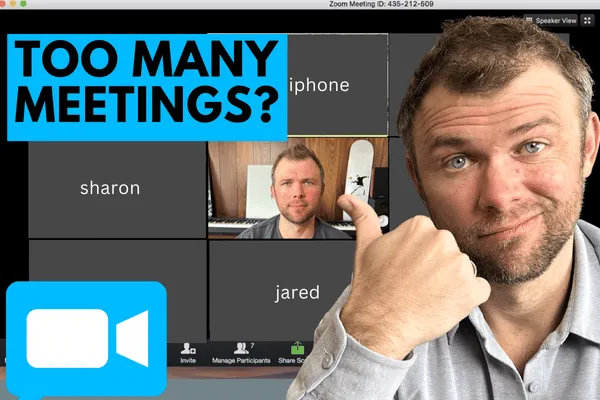Mastering YouTube Ads with Video Power

The Ideal Team Meeting: Transforming Video Marketing Efficiency
As a business owner, you’re likely bogged down by endless meetings. But what if you could replace them all with just one super-efficient team meeting?
This meeting has saved me and my team countless hours, boosted morale, and significantly increased our productivity.
In this guide, I’ll break down our weekly team agenda so you can free up your time and get more done. Unfortunately, many people stick to ineffective meeting structures, wasting precious time and resources.
Why People Struggle with Effective Team Meetings
Inconsistent Scheduling: Without a regular, reliable schedule, meetings can feel chaotic and disorganized.
Lack of Clear Objectives: Meetings often lack a clear purpose, leading to wasted time and unclear outcomes.
Poor Time Management: Without someone to keep things on track, meetings can drag on without productive results.
Avoidance of Tough Issues: Shying away from discussing challenges means problems go unsolved.
Lack of Accountability: Without clear action items, follow-ups are missed, and progress stalls.
But don’t worry, we’re going to show you how to overcome these challenges and run the perfect team meeting.
Step 1: Set a Consistent Meeting Schedule
Consistency is key to effective meetings. Set a specific time each week for your team meeting and make sure it’s on everyone’s calendar.
This regularity helps everyone prepare and look forward to the meeting. At Video Power, we hold our weekly meeting at the same time every week, ensuring everyone is on the same page.
Example:
- Our team meetings are scheduled every Monday at 10 AM. Everyone knows this is a non-negotiable part of their week.
Having a referee or time tracker is also crucial. This person keeps the meeting on track, making sure we stick to the agenda and move things along efficiently.
Step 2: Start with Company Headlines
Start your meeting with company headlines to set the tone. This involves sharing the top 10% and bottom 10% of what's going on in team members' lives, both professionally and personally.
This transparency fosters trust and helps in identifying issues that need to be addressed.
Example:
- Best thing that happened last week: We launched a successful YouTube ad campaign.
- Most challenging thing: A client project faced unexpected delays.
Discussing these points openly allows the team to support each other and tackle problems head-on.
Step 3: Review OKRs and Client Accounts
Next, move on to reviewing your Objectives and Key Results (OKRs) and client accounts. Each team member should have at least three metrics they are accountable for, based on quarterly or annual goals. This helps ensure everyone is working towards common objectives and maintains accountability.
Example:
- A team member might report they are on track with generating leads but off track with completing video edits.
If someone is off track, discuss whether this issue should be moved to the Issues, Discuss, and Solve (I.D.S) section for further exploration.
Step 4: Go Over the To-Do List
Review the to-do list from the previous week. Follow up on whether tasks were completed and if there are any new tasks to add. This keeps everyone accountable and ensures that nothing falls through the cracks.
Example:
- Follow up: “Joe, did you complete the video edits?”
- New task: “Sarah, can you draft the email campaign by Wednesday?”
This step ensures everyone knows what they need to accomplish before the next meeting.
Step 5: Tackle the Issues List (I.D.S)
This is the bulk of the meeting. The Issues, Discuss, and Solve (I.D.S) section focuses on identifying and prioritizing the top issues. Discuss these issues in detail, gather everyone’s perspectives, and collaboratively find solutions. Assign clear action items to specific team members.
Example:
- Issue: A client project delay.
- Discussion: Gather facts and perspectives from the team.
- Solution: Decide on action steps and assign tasks with deadlines.
This collaborative approach ensures that problems are addressed and resolved effectively.
Conclusion
By following this structured agenda, you can transform your meetings from chaotic time-wasters to productive, problem-solving sessions.
Consistent scheduling, clear objectives, accountability, and open communication are key to making your meetings effective.
Implement this agenda, and you’ll see a marked improvement in your team’s morale and productivity. Don’t let ineffective meetings hold you back.
Share your experiences and tips in the comments below, and stay tuned for our next video on boosting your appointment show-up rates.

